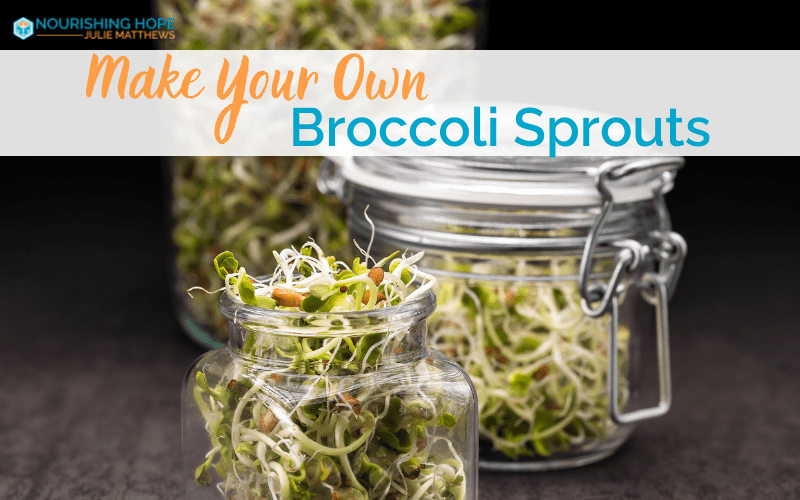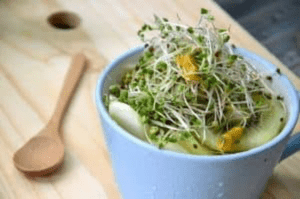
Broccoli Sprouts Made Easy
2 TBS broccoli seeds I like Johnny Seeds and Sprout People brand seeds. 1 quart sized mason jar, sterilized (or well scrubbed with really hot water and dried naturally).
- Put 2 Tablespoons broccoli seeds in the mason jar
- Fill halfway with water
- Swirl it around to agitate the seeds, and get little beads of air around them
- Soak for 8 hours
- Put a sprouting lid on the mason jar
- Drain water out, and leave jar upside down to keep water out
- Water daily by filling it up and draining it upside down.
Keep in a dark place or indirect sunlight. They will start sprouting after about 24 hours. The sprouts are typically done around 5 days. For the last few hours, put them in the sun to turn them green. It doesn’t need to be direct sunlight, indirect works fine. After they green on the outside, you can break apart the sprouts some, to get the inside green as well.
 Separate the seed hulls from the sprouts. I use a mini salad spinner. I fill it with water, and agitate all the sprouts. Most of the hulls will float to the top, some will sink. As they float, I keep filling it with water and draining it off until as many hulls are separated as possible.
Separate the seed hulls from the sprouts. I use a mini salad spinner. I fill it with water, and agitate all the sprouts. Most of the hulls will float to the top, some will sink. As they float, I keep filling it with water and draining it off until as many hulls are separated as possible.- Drain them again.
Store your sprouts in the refrigerator. They should last about 4 days (although in my house they run out before then). Basically, when I harvest one batch, I start soaking another! That way I always have some sprouts on hand. Keep in mind, these sprouts are spicy! So to make them most enjoyable, especially for kids, I put them on salads, mix them 50/50 with sauerkraut to make “sprout kraut”, or put them in wraps/sandwiches. Enjoy!
Amazon Disclaimer: Julie Matthews and Nourishing Hope is a participant in the Amazon Services LLC Associates Program, an affiliate advertising program designed to provide a means for sites to earn advertising fees by advertising and linking to Amazon.com.
FTC Disclaimer: Some links may be affiliate links. We may get paid if you buy something or take an action after clicking one of these.




0 Comments